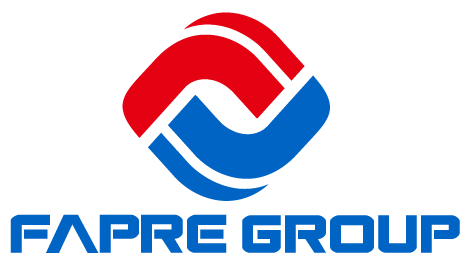NEWS CENTER
Rubber conveyor belts are essential components in various industries, facilitating the seamless transport of materials from one point to another. Their widespread use in sectors such as mining, manufacturing, logistics, and agriculture underscores their significance in modern industrial operations. This article delves into the features, types, benefits, and maintenance of rubber conveyor belts, providing a comprehensive understanding of why they are indispensable in material handling.
What Are Rubber Conveyor Belts?
Rubber conveyor belts are continuous belts made from natural or synthetic rubber. They are reinforced with layers of fabric or metal to enhance strength and durability. These belts are designed to move products, raw materials, or other items efficiently across various distances and terrains.
Key Features of Rubber Conveyor Belts
Durability and Strength
- Rubber conveyor belts are built to withstand heavy loads and harsh conditions. The rubber material offers excellent resistance to wear and tear, while the reinforcement layers provide added strength.
Flexibility
- The flexibility of rubber allows these belts to be used in applications requiring bends and inclines. This flexibility ensures that the belt can navigate complex conveyor systems without compromising performance.
Temperature Resistance
- Depending on the type of rubber used, conveyor belts can resist a wide range of temperatures. This makes them suitable for industries where the transported materials are either very hot or cold.
Chemical Resistance
- Rubber conveyor belts can be formulated to resist various chemicals, making them ideal for transporting chemically reactive materials.
Non-Slip Surface
- The rubber surface provides excellent grip, ensuring that the materials stay on the belt during transport, reducing the risk of spillage.
Types of Rubber Conveyor Belts
General Purpose Belts
- These are versatile belts used in a wide range of industries. They are designed for general material handling and are suitable for transporting light to medium-weight items.
Heat-Resistant Belts
- Specifically designed to withstand high temperatures, these belts are used in industries like steel manufacturing and cement production, where the materials being transported are often hot.
Oil-Resistant Belts
- These belts are formulated to resist the degrading effects of oil and grease. They are commonly used in industries such as food processing and automotive manufacturing.
Chemical-Resistant Belts
- Ideal for transporting chemicals or materials exposed to harsh chemicals, these belts are designed to resist chemical reactions that could damage the belt.
Flame-Resistant Belts
- These belts are made to resist ignition and are used in environments where fire hazards are a concern, such as mining operations.
Heavy-Duty Belts
- Designed for extremely heavy loads, these belts are reinforced with additional layers of fabric or metal to handle high-impact conditions.
Benefits of Using Rubber Conveyor Belts
Efficiency in Material Handling
- Rubber conveyor belts streamline the process of transporting materials, reducing the need for manual labor and speeding up production processes.
Cost-Effective
- The durability and low maintenance requirements of rubber conveyor belts make them a cost-effective solution for material handling. They reduce downtime and the need for frequent replacements.
Versatility
- Rubber conveyor belts can be customized to meet specific needs, making them suitable for a wide range of applications across different industries.
Safety
- By automating the transportation of materials, rubber conveyor belts minimize the risk of accidents and injuries associated with manual handling.
Environmental Benefits
- Conveyor belts contribute to cleaner production environments by reducing material spillage and waste.
Maintaining Rubber Conveyor Belts
To ensure the longevity and optimal performance of rubber conveyor belts, regular maintenance is crucial. Here are some maintenance tips:
Regular Inspections
- Conduct routine inspections to check for signs of wear, damage, or misalignment. Early detection of issues can prevent major breakdowns.
Cleaning
- Keep the belts clean to prevent the buildup of materials that could cause wear or reduce efficiency. Use appropriate cleaning agents to avoid damaging the rubber.
Lubrication
- Ensure that the conveyor system’s moving parts are adequately lubricated to reduce friction and wear.
Tension Adjustment
- Regularly check and adjust the belt tension to prevent slippage or excessive strain on the belt. Proper tensioning ensures efficient operation and extends the belt's lifespan.
Replacement of Worn Parts
- Replace worn or damaged parts promptly to prevent them from causing further damage to the conveyor system.
Training for Operators
- Ensure that operators are trained in the correct use and maintenance of the conveyor system. Proper handling and operation can prevent many common issues.
Applications of Rubber Conveyor Belts
Rubber conveyor belts are used in a variety of industries, each requiring specific features to meet their unique needs:
Mining
- Used to transport ores, coal, and other mined materials over long distances. The belts need to be durable and capable of handling heavy loads.
Manufacturing
- Employed in assembly lines and production processes to move components and finished products efficiently.
Logistics and Warehousing
- Essential for sorting and transporting packages and goods in distribution centers and warehouses.
Food Processing
- Used to transport raw ingredients and finished food products. These belts are often designed to be oil and chemical-resistant to meet hygiene standards.
Agriculture
- Used to move grains, seeds, and other agricultural products. These belts must be durable and able to operate in outdoor environments.
Construction
- Used to transport construction materials like sand, gravel, and concrete. The belts need to be robust and resistant to abrasion.
Conclusion
Rubber conveyor belts are a vital component in many industries, providing a reliable and efficient solution for material handling. Their durability, flexibility, and ability to withstand various environmental conditions make them an indispensable tool in modern industrial operations. By understanding their features, types, and maintenance requirements, you can make informed decisions to optimize your material handling processes and enhance productivity. Investing in high-quality rubber conveyor belts ensures a smoother, safer, and more cost-effective workflow, contributing to the overall success of your operations.
